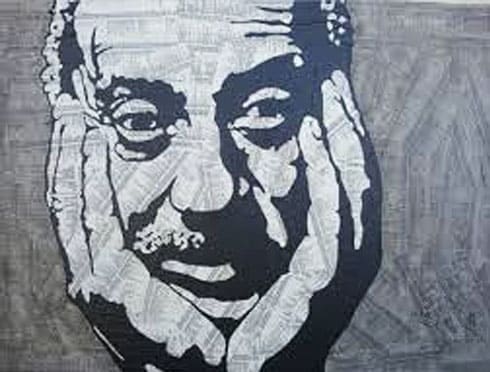

In 1973, Astatke was chosen to perform with Ellington when the American bandleader toured Ethiopia and Zambia, sponsored by the state department at a time when the US government saw jazz as a weapon in the propaganda war against communism. Nevertheless, his reputation grew, thanks in part to a partnership with Amha Eshete, an equally adventurous young man who had started the country's first independent record label. Photograph: Andy Sheppard/RedfernsĪstatke worked as an arranger for other artists as well as a bandleader, but the musical elements he imported from America – his own vibraphone the electric keyboards and the wah-wah pedal for the electric guitar the use of congas and bongos to articulate Latin rhythms – were only gradually assimilated, sometimes meeting outright resistance from those who resented what they saw as the imposition of alien sounds and techniques on traditional material. Mulatu Astatke on stage at the Big Chill festival, Herefordshire, in 2011. The Ethiopian modes have an almost Arabic feel to them, this strange harmonic minor twist with a flat sixth and a sharp seventh, which gives the music a very unusual tonality." But it's all filtered through this African rhythmic sensibility – sixes against fours and threes against twos in the music on a deep level – and also the other elements of the Ethiopian sound, in particular the modal language, which is probably the thing that most conspicuously sets it apart from other African traditions. "There's an obvious influence from people like Duke Ellington," says Alexander Hawkins, the 33-year-old English pianist who has been a member of Astatke's band for the last five years and is featured on his most recent album, Sketches of Ethiopia. He called his new music "Ethio jazz", and his recordings from the period show him using local musicians, steeped in the four basic pentatonic modes with which they grew up, to impart a new flavour to the structures he had brought with him from America. In Addis Ababa he discovered an upsurge of activity in the world of the arts and entertainment, and a booming night-life scene that offered plenty of scope for experiment. When he returned home in 1969 it was with the idea of creating a more ambitious musical fusion.

Moving to New York, he pursued his interests in jazz and Latin music. Leaving London in 1963, he enrolled as the first African student at the jazz-oriented Berklee College in Boston, whose alumni include the vibraphonist Gary Burton and the pianist Keith Jarrett. He began playing vibraphone and piano in the clubs of Soho with expatriate African and Caribbean jazz musicians, and in dance halls with the popular Edmundo Ros orchestra. But music got in the way of those initial career plans, and his gifts took him to Trinity College of Music in London, where he studied piano, clarinet and harmony, and to the Eric Gilder School of Music in Twickenham, whose pupils included the Ghanaian saxophonist Teddy Osei – later to found Osibisa, the pioneering Afro-rock group – and Labi Siffre, the singer-guitarist. The 16-year-old Astatke had arrived in Britain in 1959, sent from Addis Ababa to North Wales by his wealthy parents, first to Lindisfarne College and then to Bangor University.
#MULATU ASTATKE SKETCHES OF ETHIOPIA SONGS SERIES#
Instead, he invented a musical genre and became the central figure in an enormously successful series of anthologies that dug deep into the origins of a fascinating but long-hidden world. The first to realise that its distinctive indigenous modes and textures could be blended with those of American jazz was Mulatu Astatke, the composer and bandleader whose early recordings began to attract a cult following 15 years ago, after being unearthed and reissued by an enthusiastic Frenchman.Īstatke, whose appearance in London on 13 September will be a highlight of the Southbank Centre's Africa Utopia festival, was supposed to devote his life to aeronautical engineering. Its roots lie deep within the musical culture of a country that, with the exception of a brief period under Italian occupation between 1936 and 1941, has enjoyed 3,000 years of independence. As an evolving form, however, it demonstrates greater resilience. How could something so special, so original, survive the embrace of people so devoted to superficiality, so quick to move on to the next sensation?Īs a fashionable novelty, Ethiopian jazz may indeed have had its moment in the spotlight. 'Everybody knows that Ethiopian jazz is the only kind worth listening to these days," a bored Roman socialite remarks during one of the many party scenes in Paolo Sorrentino's film The Great Beauty.


 0 kommentar(er)
0 kommentar(er)
